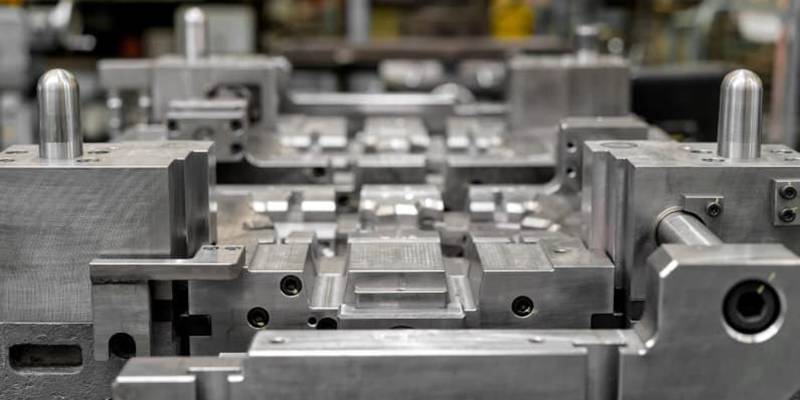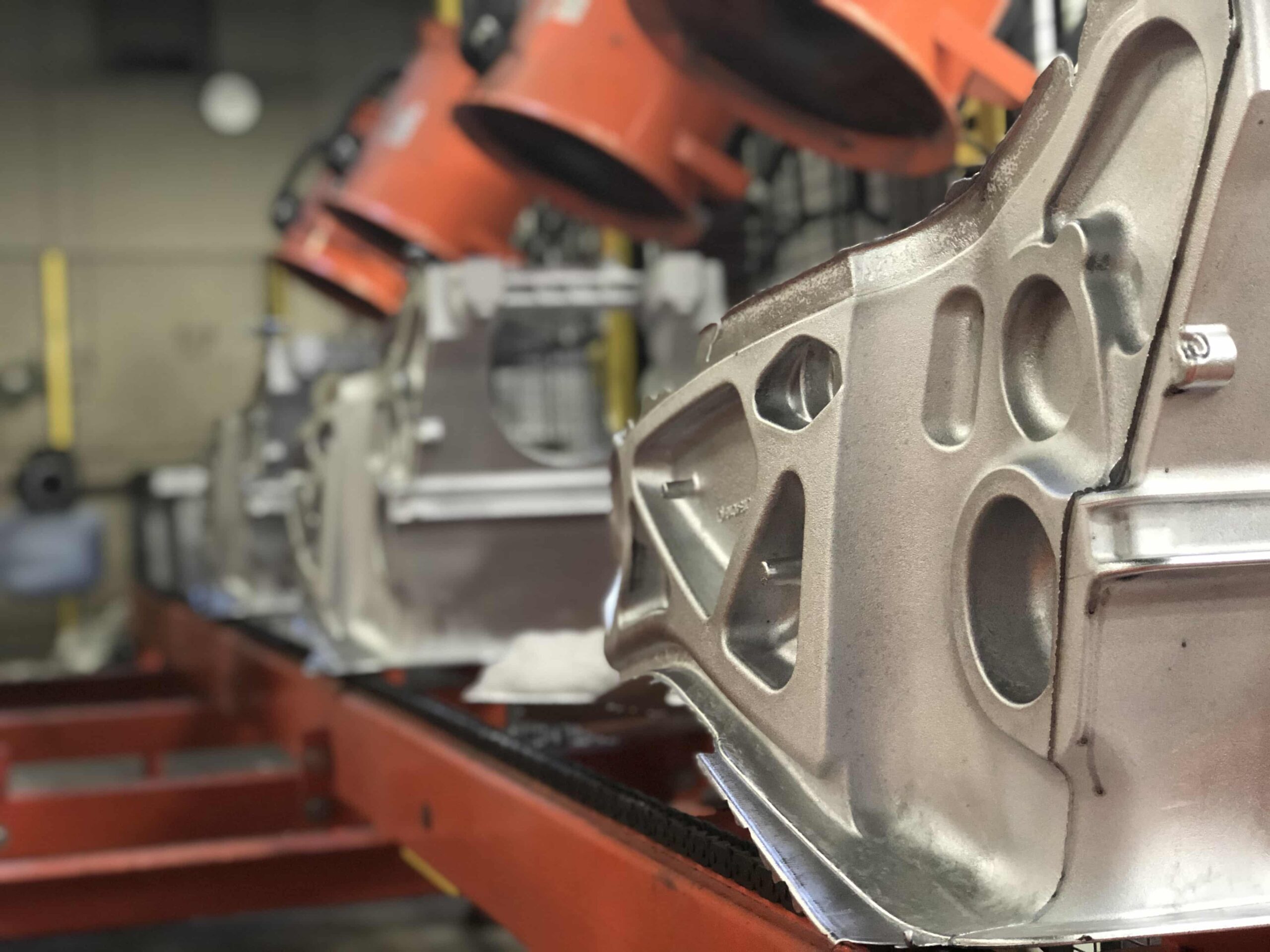Inside Wisconsin Aluminum Foundry: Next-Generation Production Processes
Checking Out the Cutting-edge Techniques Utilized in Modern Aluminum Foundries
Modern aluminum foundries are undergoing a substantial transformation with the fostering of ingenious methods. Advanced casting methods, clever automation, and sustainable methods are improving production processes. These innovations not only enhance performance but likewise address ecological problems. As the sector develops, the combination of electronic innovations plays an important duty. Understanding these modifications is important for realizing the future of aluminum manufacturing and its ramifications for worldwide markets. What exists ahead in this vibrant field?
Advanced Casting Techniques

Furthermore, improvements in thermal control and mold and mildew style have actually added to even more consistent casting results. These advancements enable far better control of cooling rates, reducing problems and improving mechanical residential or commercial properties. Because of this, manufacturers can produce lightweight yet durable components, satisfying the boosting needs of various markets, including automotive and aerospace, for high-performance aluminum parts.
Smart Automation and Robotics
The integration of smart automation and robotics in aluminum foundries notes a substantial development in making efficiency. These innovations make it possible for accuracy and uniformity in production procedures, substantially lowering human error and boosting security. Automated robot systems handle recurring tasks, such as molding, putting, and cooling, permitting human operators to concentrate on more facility responsibilities that call for vital thinking and oversight.
In addition, ai-driven analytics and smart sensors give real-time data surveillance, helping with predictive maintenance and decreasing downtime. This results in maximized source allotment and improved energy usage, adding to total sustainability in production.
The flexibility of robot systems enables for fast modifications to altering manufacturing demands, improving versatility in production. As foundries significantly embrace these advanced technologies, they not only improve operational performance yet additionally place themselves as leaders in innovation within the metal casting market.
Additive Manufacturing in Foundries
Transforming typical manufacturing techniques, additive manufacturing is revolutionizing aluminum foundries by making it possible for the development of complicated geometries that were previously unattainable. This method enables the layer-by-layer building of elements, considerably lowering material waste and reducing manufacturing times. Consequently, foundries can generate complex styles that enhance efficiency and performance, accommodating the expanding demands of numerous sectors.
Additive production helps with quick prototyping, permitting engineers to check and repeat layouts quickly. This agility not only accelerates the development cycle but also assists in identifying possible problems before major production begins. The integration of innovative materials and processes in additive production even more boosts the mechanical properties of aluminum parts, advertising development in item design. As a result, aluminum foundries that take on these techniques place themselves at the center of industry improvements, ensuring competitiveness in an ever-evolving market landscape.
Lasting Practices and Recycling
Sustainable methods in aluminum foundries are increasingly concentrated on enhancing recycling procedures and embracing eco-friendly casting strategies. These technologies intend to reduce waste and power consumption while taking full advantage of using recycled products. As the sector advances, the integration of sustainability into manufacturing approaches becomes crucial for meeting environmental criteria and customer demands.
Reusing Process Improvements
As sectors increasingly acknowledge the ecological effect of waste, aluminum foundries are taking on cutting-edge recycling process enhancements to improve sustainability. These innovations focus on decreasing energy usage and making best use of product recovery. Lots of foundries are carrying out closed-loop systems that recycle scrap aluminum produced during production, decreasing waste and minimizing the requirement for virgin products. Advanced arranging technologies, such as automated optical sorting, improve the splitting up of different aluminum qualities, boosting the effectiveness of the reusing process. In addition, some foundries are making use of hydrometallurgical techniques to recuperate aluminum from complicated waste streams. By integrating these improvements, aluminum foundries not just add to a round economic climate however likewise lower their carbon footprint, aligning with worldwide sustainability goals.
Eco-Friendly Casting Techniques
While typical casting techniques often involve substantial power usage and material waste, aluminum foundries are significantly embracing green casting strategies that prioritize sustainability. Techniques such as low-pressure die casting, which reduces air emissions, and the usage of water-based mold and mildew releases add to minimized environmental influence. Furthermore, developments in 3D printing technology permit the development of intricate molds with much less material waste. Many foundries are likewise carrying out closed-loop systems that recycle water and aluminum scrap, more reducing resource usage. By accepting renewable resource sources, such as solar and wind power, these centers improve their sustainability efforts. In general, the adoption of environmentally friendly practices in aluminum casting not just benefits the atmosphere yet likewise advertises financial efficiency and technology within the industry.
Improved High Quality Control Measures
Improved top quality control steps in aluminum foundries are increasingly reliant on innovative inspection modern technologies and real-time monitoring systems. These technologies enable makers to detect flaws early and ensure regular product high quality. By incorporating these devices, foundries can noticeably improve their operational effectiveness and minimize waste.
Advanced Inspection Technologies
Advanced evaluation innovations play an essential function in guaranteeing the top quality and integrity of aluminum castings. These advanced methods consist of non-destructive screening (NDT) methods such as ultrasonic testing, radiographic screening, and swirl present inspections. Each approach permits in-depth assessment of spreadings without jeopardizing their structural honesty. Advanced imaging strategies, such as computed tomography, supply a comprehensive sight of inner features, making it possible for the discovery of problems like voids and incorporations. In addition, automated optical evaluation systems boost accuracy by employing high-resolution cams and artificial intelligence formulas to analyze surface area quality. By applying these sophisticated examination innovations, aluminum foundries can effectively lessen defects, making sure that castings satisfy stringent market criteria and client demands.
Real-Time Surveillance Solutions
As suppliers venture for quality in aluminum casting, real-time monitoring systems arise as a crucial enhancement in quality assurance measures. These systems make use of sophisticated sensors and information analytics to continuously track vital criteria throughout the casting procedure, such as pressure, alloy, and temperature level composition. By giving instant responses, they allow drivers to determine deviations from suitable conditions and make prompt modifications. This positive technique not just reduces issues yet also enhances general effectiveness and reduces waste - Wisconsin Aluminum Foundry. Furthermore, integration of real-time data into manufacturing monitoring systems assists in better decision-making and improves traceability. Real-time tracking systems play a crucial role in maintaining high requirements of quality in modern aluminum foundries, making certain that products satisfy strict sector specs.
Digital Twin Innovation for Optimization

The assimilation of digital twin modern technology allows foundries to check various scenarios without interfering with real manufacturing. This capability promotes a proactive method to upkeep and source monitoring, inevitably minimizing waste and reducing functional costs. Additionally, the innovation help in procedure optimization by allowing engineers to picture the results of adjustments in real-time, making sure better outcomes. Because of this, aluminum foundries taking on electronic twin modern technology are placed to achieve greater efficiency and competitiveness in a significantly requiring market.

Industry 4.0 and IoT Integration
The adoption of digital twin technology in aluminum foundries belongs to a more comprehensive activity in the direction of Sector 4.0, identified by the assimilation of the Internet of Things (IoT) right into manufacturing processes. This integration enables real-time monitoring and information collection from different machinery and tools, resulting in improved operational efficiency. Sensing units installed in devices gather vital data, which is evaluated to enhance manufacturing workflows and forecast upkeep requirements.
In addition, IoT tools assist in communication in between different production stages, enabling for smooth control and reducing downtime. By leveraging cloud computer, foundries can keep and evaluate substantial amounts of information, allowing even more informed decision-making. This technology also supports remote management, where operators can oversee procedures from anywhere, boosting responsiveness to manufacturing obstacles. On the whole, the blend of Market 4.0 and IoT within aluminum foundries is transforming conventional methods, making them much more nimble and responsive to market demands.
Regularly Asked Inquiries
What Are the Key Advantages of Aluminum Over Other Metals?
Aluminum offers countless benefits over other metals, including its light-weight nature, exceptional rust resistance, high thermal and electrical conductivity, pliability, and recyclability, making it a favored choice for numerous applications throughout several markets. - Aluminum Foundry
Exactly How Do Modern Foundries Handle Hazardous Products?
Modern foundries handle hazardous products through rigorous security protocols, progressed filtration systems, and reusing methods. Regular training guarantees employees comprehend finest techniques, while checking systems find and minimize prospective threats to keep a secure workplace.
What Is the Regular Life-span of Aluminum Castings?
The regular life expectancy of aluminum castings varies from 20 to half a century, relying on variables such as environmental problems, usage, and upkeep. Appropriate care can expand their resilience and performance significantly gradually.
Are There Any Type Of Wellness Threats Related To Aluminum Foundry Job?
Yes, aluminum shop work postures wellness threats, consisting of breathing issues from breathing in fumes and dirt, skin inflammation from contact with liquified metal, and potential direct get more info exposure to harmful chemicals. Correct precaution are necessary to mitigate these risks.
Just How Do Factories Ensure Employee Safety in High-Temperature Environments?
Factories apply rigorous security protocols, consisting of safety equipment, temperature tracking systems, and regular training. These measures guarantee that employees are outfitted to manage high-temperature atmospheres, reducing risks and advertising a more secure workplace.
Various innovative casting strategies have emerged in aluminum foundries, revolutionizing standard procedures. Sustainable practices in aluminum foundries are progressively concentrated on boosting reusing procedures and adopting green casting strategies. Many foundries are executing closed-loop systems that recycle scrap aluminum generated throughout production, decreasing waste and minimizing the demand for virgin products. While traditional casting methods typically include considerable power usage and material waste, aluminum foundries are progressively embracing environment-friendly casting strategies that focus on sustainability. While several sectors are significantly taking on electronic innovations, aluminum foundries are leveraging electronic twin innovation to improve operational efficiency and maximize manufacturing processes.